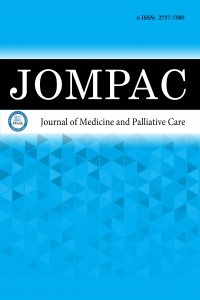1. <ol>
<li style="margin-left: 18pt;">
Wilkins MF, Wu JM. Lifetime risk of surgery for stress urinary incontinence or pelvic organ prolapse. <em>Minerva Ginecol</em>. 2017;69 (2):171-177.
<li style="margin-left: 18pt;">
DeLancey JOL. Surgery for cystocele III: do all cystoceles involve apical descent: observations on cause and effect. <em>Int Urogynecol J</em>. 2012;23(6):665-667.
<li style="margin-left: 18pt;">
Funt MI, Thompson JD, Birch H. Normal vaginal axis. <em>South Med J</em>. 1978;71(12):1534-1535; 1552.
<li style="margin-left: 18pt;">
Fatih Şahin,Ramazan Adan. Comparison of anterior and posterior approach bilateral sacrospinous ligament fixation for vaginal vault prolapse.<em>Clin Exp Obstet Gynecol.</em>2023;50(10):216.
<li style="margin-left: 18pt;">
Paraiso MFR, Ballard LA, Walters MD, Lee JC, Mitchinson AR, Shull B. Pelvic support defects and visceral and sexual function in women treated with sacrospinous ligament suspension and pelvic reconstruction. <em>Am J Obstet Gynecol</em>. 1996;175(6):1423-1430; discussion 1430-1.
<li style="margin-left: 18pt;">
Cosson M, Boukerrou M, Lacaze S, et al. study of pelvic ligament strength. <em>Eur J Obstet Gynecol Reprod Biol</em>. 2003;109(1):80-87.
<li style="margin-left: 18pt;">
Noé KG, Schiermeier S, Alkatout I, Anapolski M. Laparoscopic pectopexy: a prospective, randomized, comparative clinical trial of standard laparoscopic sacral colpocervicopexy with the new laparoscopic pectopexy—postoperative results and intermediate-term follow-up in a pilot study. <em>J Endourol</em>. 2015;29(2):210-215.
<li style="margin-left: 18pt;">
Diaz DC, Robinson D, Bosch R, et al. Patient-reported outcome assessment. In: Abrams P, Cardozo L, Wagg A, Wein A, editors. Incontinence, vol. 1. 6<sup>th</sup> ed. Tokyo: ICUD ICS; 2017. p. 541-670.
<li style="margin-left: 18pt;">
Rosen R, Brown C, Heiman J, et al. The female sexual function index (FSFI): a multidimensional self-report instrument for the as_sessment of female sexual function. <em>J Sex Marital Ther</em>. 2000; 26(2):191-205.
<li style="margin-left: 18pt;">
Sze EHM, Meranus J, Kohli N, Miklos JR, Karram MM. Vaginal configuration on MRI after abdominal sacrocolpopexy and sacrospinous ligament suspension. <em>Int Urogynecol J</em>. 2001;12(6): 375-380
<li style="margin-left: 18pt;">
Sato H, Abe H, Ikeda A, Miyagawa T, Sato K. Complications and clinical outcomes of laparoscopic sacrocolpopexy for pelvic organ prolapse. <em>J Obstet Gynaecol</em>. 2021;41(1):128-132.
<li style="margin-left: 18pt;">
Pulatoğlu Ç, Yassa M, Turan G, Türkyılmaz D, Doğan O. Vaginal axis on MRI after laparoscopic lateral mesh suspension surgery: a controlled study. <em>Int Urogynecol J</em>. 2021;32(4):851-858.
<li style="margin-left: 18pt;">
Dällenbach P. Laparoscopic Lateral Suspension (LLS) for the treatment of apical prolapse: a new gold standard? <em>Front Surg</em>. 2022;12;9:898392.
<li style="margin-left: 18pt;">
Juliato CRT, Santos-Junior LC, de Castro EB, Dertkigil SS, Brito LGO. Vaginal axis after abdominal sacrocolpopexy versus vaginal sacrospinous fixation-a randomized trial. <em>Neurourol Urodyn</em>. 2019;38(4):1142-1151.
<li style="margin-left: 18pt;">
Li S, Wen X, Gao Z, et al. Comparison of the axes and positions of the uterus and vagina between women with and without pelvic floor organ prolapse. <em>Front Surg</em>. 2022;9:760723.
<li style="margin-left: 18pt;">
Luo J, Betschart C, Ashton-Miller JA, DeLancey JO. Quantitative analyses of variability in normal vaginal shape and dimension on MR images. <em>Int Urogynecol J</em>. 2016; 27(7):1087-1095.
<li style="margin-left: 18pt;">
Giraudet G, Protat A, Cosson M. The anatomy of the sacral promontory: how to avoid complications of the sacrocolpopexy procedure. <em>Am J Obstet Gynecol</em>. 2018; 218(4): 457.e1-457.e3.
<li style="margin-left: 18pt;">
Mahoney C, Scott G, Dwyer L, et al. Laparoscopic sacrocolpopexy posthysterectomy: intraoperative feasibility and safety in obese women compared with women of normal weight. <em>Int Urogynecol J</em>. 2019;30(12):2041-2048.
<li style="margin-left: 18pt;">
Hefni MA, El-Toukhy TA. Long-term outcome of vaginal sacrospinous colpopexy for marked uterovaginal and vault prolapse. <em>Eur J Obstet Gynecol Reprod Biol</em>. 2006; 127:257-263.
<li style="margin-left: 18pt;">
El Hamamsy D, Fayyad AM. New onset stress urinary incontinence following laparoscopic sacrocolpopexy and its relation to anatomical outcomes. <em>Int Urogynecol J</em>. 2015;26(7): 1041-1045
<li style="margin-left: 18pt;">
Nichols DH, Milley PS, Randall CL. Significance of restoration of normal vaginal depth and axis. <em>Obstet Gynecol</em>. 1970;36(2):251-256.
<li style="margin-left: 18pt;">
Fatton B, de Tayrac R, Letouzey V, Huberlant S. Pelvic organ prolapse and sexual function. <em>Nat Rev Urol</em>. 2020;17(7):373-390.

